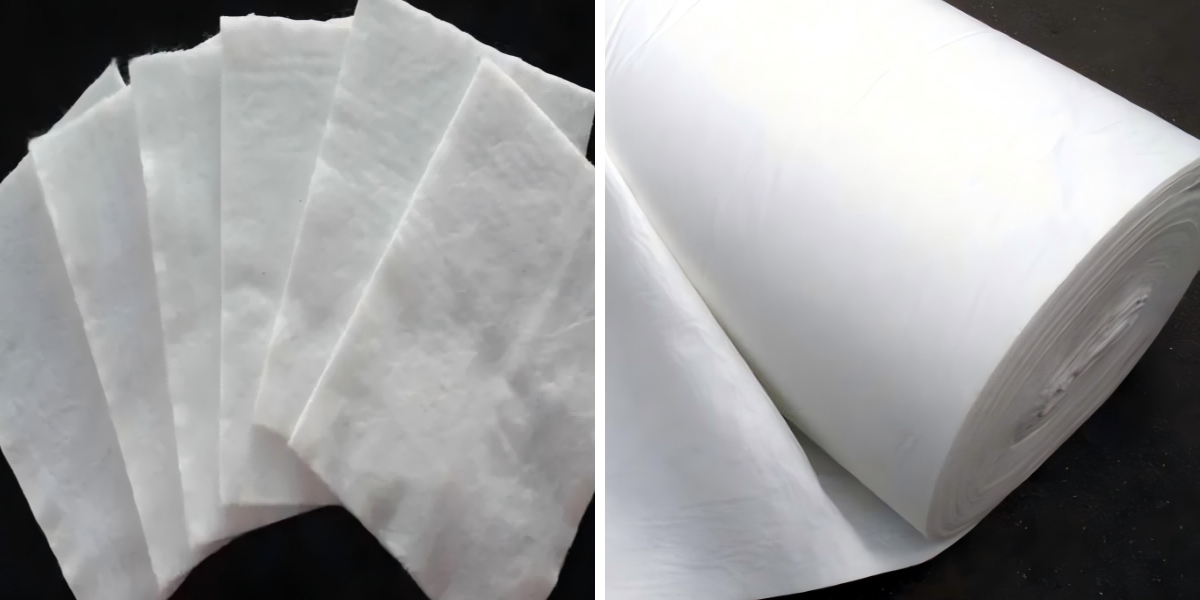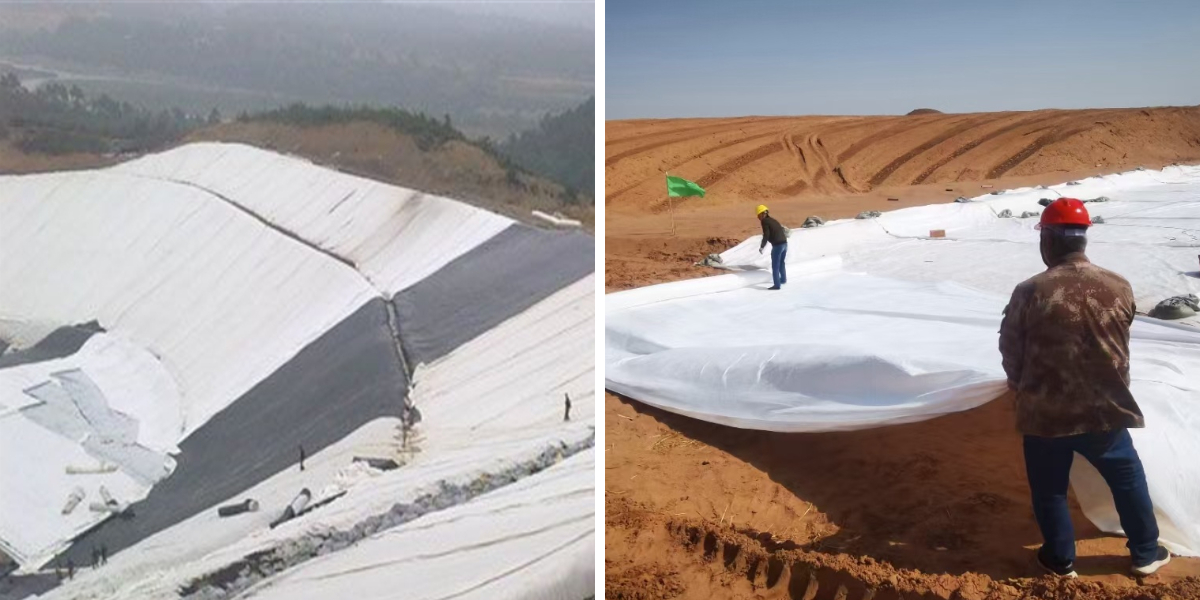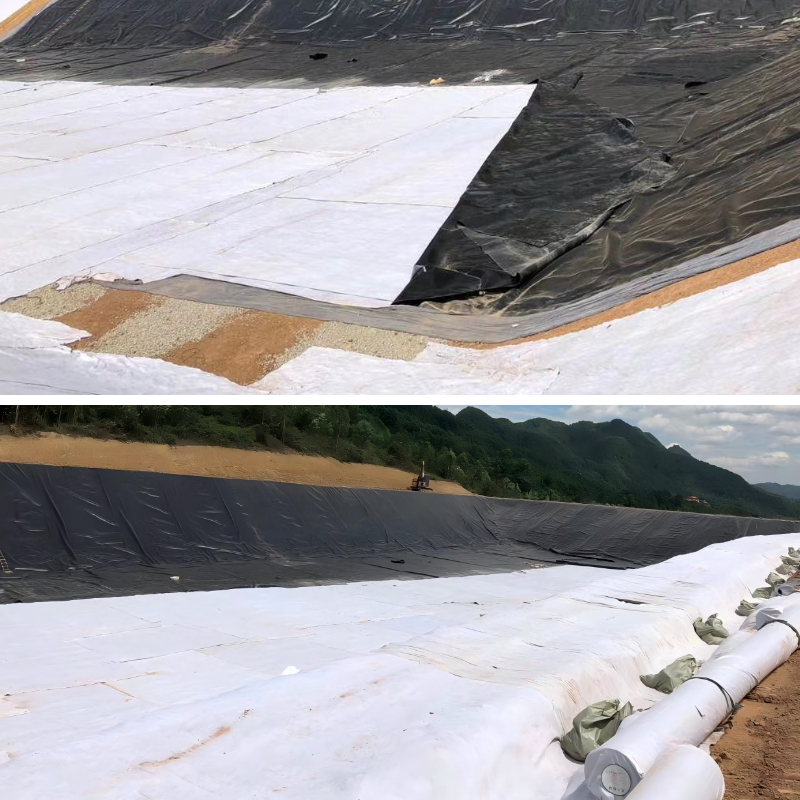How to Choose the Right Geotextile Cloth for Your Landscaping or Drainage Project
Let’s be real—picking the wrong geotextile cloth is a total headache. You’ll end up with weeds taking over your flower beds, water sitting stagnant in the yard, or fabric that falls apart after just a year. To avoid that mess, here are 5 simple, doable steps to find the perfect cloth for whatever you’re working on, whether it’s sprucing up your landscaping or fixing drainage issues.
1. Align the Cloth with Your Project Type (Landscaping vs. Drainage)
First rule: Don’t grab the first roll you see and hope it works. Your project type—landscaping or drainage—totally dictates what you need.
If you’re tackling landscaping—like keeping weeds out of your flower beds or holding soil in place under mulch or rocks—you need something that blocks weeds but still lets your plants breathe. Non woven landscape fabric is perfect for small to medium beds. It feels like soft felt, so it stops weed seeds from growing up, but air, water, and nutrients can still get down to your plants’ roots. If you’ve got a bigger space, like a 15-foot rock garden, or you’re using heavy stuff like thick river rocks, step up to non woven geotextile landscape fabric. It’s thicker, harder to tear, and can handle that extra weight without breaking.
For drainage jobs—say, fixing a soggy lawn, lining a French drain, or protecting your patio from water damage—geotextile drainage fabric is non-negotiable. Regular landscaping fabric just won’t cut it here. This stuff has bigger holes, so water flows through fast, carrying excess moisture away from your house or plants. And it traps dirt, too—so your gravel or drain pipes won’t get clogged. I used it last year when I put in a French drain for my downspout, and the trench is still clear of mud. Total game-changer.
2. Choose Between Non-Woven and Woven (Non-Woven Is Best for Most Homes)
Geotextile cloth basically comes in two types, and mixing them up is a common mistake. Let’s break it down so you don’t mess up.
Non-woven geotextile cloth is what most homeowners need—probably 9 out of 10 projects. It’s soft and flexible, so you can cut it easily and lay it over bumpy ground, like a sloped flower bed or around your tomato plants. It works for both landscaping and light drainage jobs:
Non woven landscape fabric (3–4 oz per square yard): Great for small flower beds, veggie gardens, or mulch paths. I use this for my herb garden, and it keeps weeds out without suffocating the basil.
Non woven geotextile landscape fabric (5–6 oz per square yard): Better for larger beds, rock gardens, or spots where people walk a little (like a path through your shrubs).
Woven geotextile cloth is stiff, like a grid or a thick tarp. It’s only for heavy-duty jobs—think under a gravel driveway or a retaining wall. It doesn’t let water through well, so if you use it in a garden, your plants will dry out. Save woven for big, tough projects, not your backyard landscaping.
3. Check Critical Specs: Width, Weight, and Permeability
Even if you pick the right type of fabric, it’ll fail if the specs don’t match your project. Don’t worry—these are easy to figure out, no fancy tools needed.
Width: Get fabric that’s the same width as your project. If your garden bed is 4 feet wide, buy 4-foot-wide non woven landscape fabric—no extra cutting, which means fewer seams. Weeds love sneaking through seams, so the fewer, the better. For an 8-foot-wide patio drainage area, use two 4-foot rolls of geotextile drainage fabric and seal the seam with landscape tape.
Weight (measured in oz per square yard): Heavier means more durable.
① Landscaping: 3–5 oz works. Use 3 oz for small beds, 5 oz for non woven geotextile landscape fabric (the thicker one for rocks or big beds).
② Drainage: 5–8 oz is better. Heavier geotextile drainage fabric won’t tear when you pile gravel on top of it.
Permeability: This is just how well water flows through. For landscaping, aim for 0.5–1 gallon per minute per square foot—enough to keep roots wet but not soaked. For drainage, go for 1–2 gallons per minute per square foot—geotextile drainage fabric is made to hit this, so water moves fast.
4. Factor in Your Local Climate and Environment
Where you live matters for how long your geotextile cloth lasts. Don’t skip this—climate can ruin even good fabric.
Sunny, hot areas: Pick fabric with UV resistance (most polypropylene ones have this). Non woven landscape fabric or non woven geotextile landscape fabric with UV protection won’t fade or crack in the summer heat. I live in Arizona, and this is a must—regular fabric turns brittle here in 6 months.
Wet, humid areas: Mold and rot are the enemies. Polypropylene fabrics (like geotextile drainage fabric) repel water, so they don’t get moldy, even in damp trenches. My cousin in Florida used this for his French drain, and it’s still good after 3 rainy seasons.
Cold, frosty areas: Flexibility is key. Non-woven fabric stays soft even when it freezes, but woven fabric gets brittle and tears when the ground thaws. Stick to non woven landscape fabric or non woven geotextile landscape fabric if you get snow.
5. Prioritize Quality to Avoid Early Replacement
Cheap geotextile cloth seems like a deal, but it’ll fall apart in 1–2 years. You’ll end up redoing the project, which costs more time and money. Here’s how to spot the good stuff:
Material: Look for 100% polypropylene. It’s strong, doesn’t rot, resists UV rays, and bugs don’t eat it. Avoid natural fibers like jute—they break down fast. Both non woven landscape fabric and geotextile drainage fabric should say polypropylene on the label.
Strength: Give it a gentle pull. If it stretches or tears easy, put it back. A good non woven geotextile landscape fabric should hold up when you pull it over rocks—no rips.
Warranty: Reputable brands offer 5–10 year warranties. For landscaping, aim for 5–7 years (most non woven landscape fabric has this). For drainage, look for 7–10 years (standard for geotextile drainage fabric). If there’s no warranty, it’s probably junk.
Final Summary
To wrap it up, just match the cloth to what you’re doing: Use non woven landscape fabric (3–4 oz, 5-year warranty) for flower or veggie beds, non woven geotextile landscape fabric (5–6 oz, 7-year warranty) for rock gardens or big landscaping areas, and geotextile drainage fabric (7–8 oz, 10-year warranty) for French drains or patios. Follow these 5 steps—match to your project, pick non-woven for most jobs, check the specs, think about your climate, and don’t buy cheap—and you’ll get fabric that lasts for years. No more redo’s, no more headaches—just a yard that looks good and works right.
Contact Us
Company Name: Shandong Chuangwei New Materials Co., LTD
Contact Person :Jaden Sylvan
Contact Number :+86 19305485668
WhatsApp:+86 19305485668
Enterprise Email: cggeosynthetics@gmail.com
Enterprise Address: Entrepreneurship Park, Dayue District, Tai 'an City,
Shandong Province










